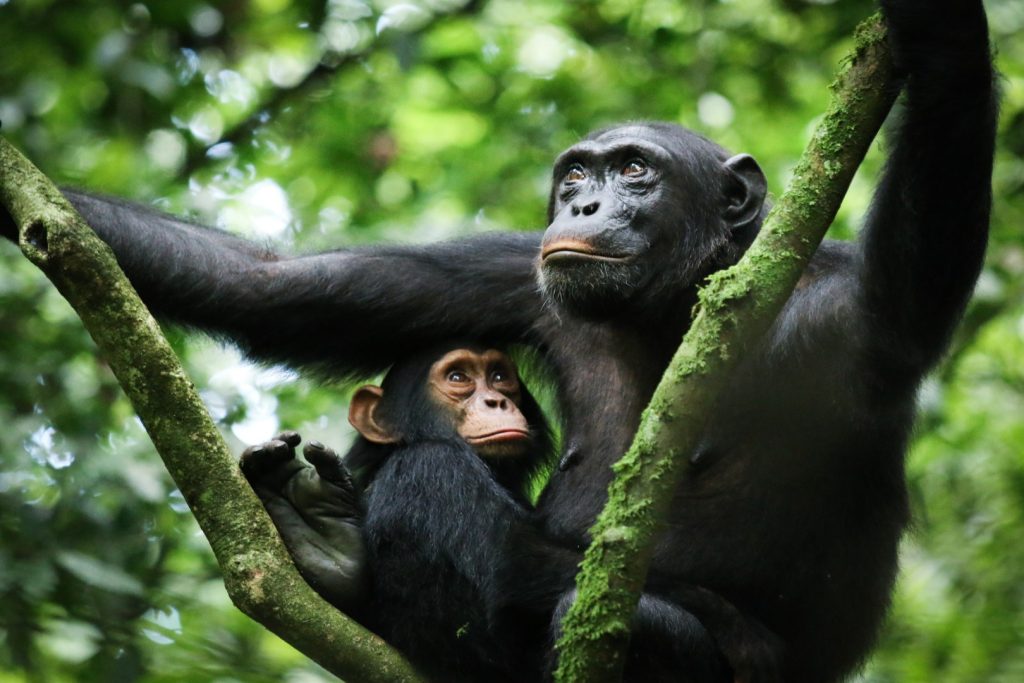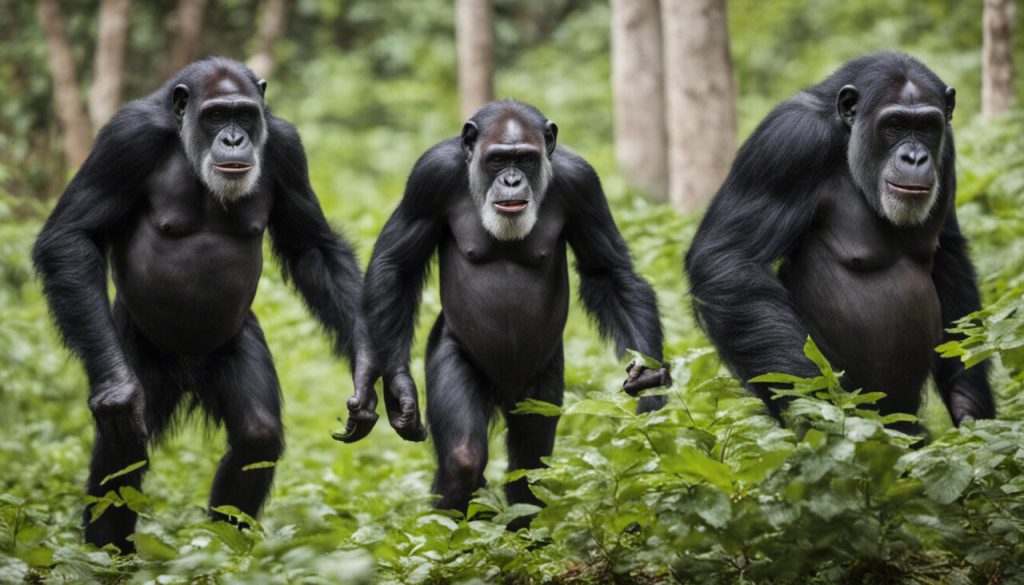Kibale National Park, located in western Uganda, is renowned for its exceptional biodiversity and is considered one of the premier destinations in Africa for primate viewing and birdwatching. Here’s an overview of Kibale National Park:
Location and Geography:
- Location: Kibale National Park is located in western Uganda, about 35 kilometers south of Fort Portal town. It covers an area of approximately 795 square kilometers and is part of the larger Kibale-Fort Portal area.
- Geography: The park’s landscape is diverse, ranging from tropical rainforests to moist evergreen forests and patches of savanna and grassland. Altitudes vary from 1,100 to 1,590 meters above sea level, contributing to its rich biodiversity.

Activities:
- Chimpanzee Tracking: Guided walks lead visitors into the forest to track habituated chimpanzee groups. Chimpanzee tracking permits are required and can be obtained from the Uganda Wildlife Authority (UWA). Morning and afternoon tracking sessions are available.
- Birdwatching: Kibale offers excellent birdwatching opportunities with diverse habitats including rainforests, grasslands, and wetlands. Birders can spot both resident and migratory species.
- Nature Walks: Guided nature walks allow visitors to explore the park’s diverse flora and fauna, including medicinal plants, butterflies, and small mammals.
- Cultural Encounters: Nearby communities offer cultural experiences such as traditional dances, visits to local villages, and interactions with the Batooro people, providing insights into local customs and traditions.
Conservation and Challenges:
- Conservation Efforts: Kibale National Park is managed by the Uganda Wildlife Authority (UWA), which implements various conservation strategies including habitat protection, anti-poaching patrols, and community-based conservation initiatives.
- Challenges: Conservation challenges include habitat fragmentation due to human activities, human-wildlife conflict, illegal poaching and logging, and the need for sustainable tourism practices to minimize environmental impact.
Biodiversity:
- Primates: Kibale National Park is renowned for its 13 primate species, making it one of the most biodiverse primate destinations in East Africa.
- Chimpanzees: The park hosts a significant population of chimpanzees, estimated at over 1,500 individuals. Chimpanzee tracking is a popular activity, allowing visitors to observe these intelligent primates in their natural habitat.
- Other Primates: Other primate species include red colobus monkeys, black-and-white colobus monkeys, L’Hoest’s monkeys, red-tailed monkeys, blue monkeys, olive baboons, and grey-cheeked mangabeys.
- Birds: Kibale is a paradise for birdwatchers, with over 375 bird species recorded. It supports a diverse array of forest birds, including the African grey parrot, great blue turaco, green-breasted pitta, and various sunbirds, cuckoos, and hornbills.
- Other Wildlife: The park is also home to numerous mammal species such as forest elephants (though sightings are rare), buffaloes, leopards, duikers, bushbucks, and an array of reptiles, amphibians, and insects.

Accessibility:
- Road Access: The park is accessible by road from major towns such as Fort Portal and Kampala. The journey from Kampala takes approximately 4-5 hours by road.
- Accommodations: Nearby accommodations range from budget campsites to luxury lodges, offering a range of options for visitors to stay and explore the park. Lodges and campsites within the park provide a more immersive experience in nature.
Visitor Experience:
- Gorilla Habituation Experience: Besides chimpanzee tracking, visitors can participate in the gorilla habituation experience, which allows longer periods of observation and interaction with wild mountain gorillas undergoing habituation.
- Facilities: The park offers visitor centers, ranger stations, picnic sites, and well-maintained trails for hiking and wildlife viewing.
- Climate: Kibale’s climate is generally tropical, with temperatures ranging from 18°C to 28°C. The rainy seasons are from March to May and September to November, with drier periods from December to February and June to August.
Kibale National Park stands out as a premier destination for primate viewing, birdwatching, and nature exploration in Uganda and East Africa. Its diverse ecosystems, rich biodiversity, and cultural heritage offer visitors an unforgettable wildlife experience while supporting conservation efforts to protect its unique habitats and species.
